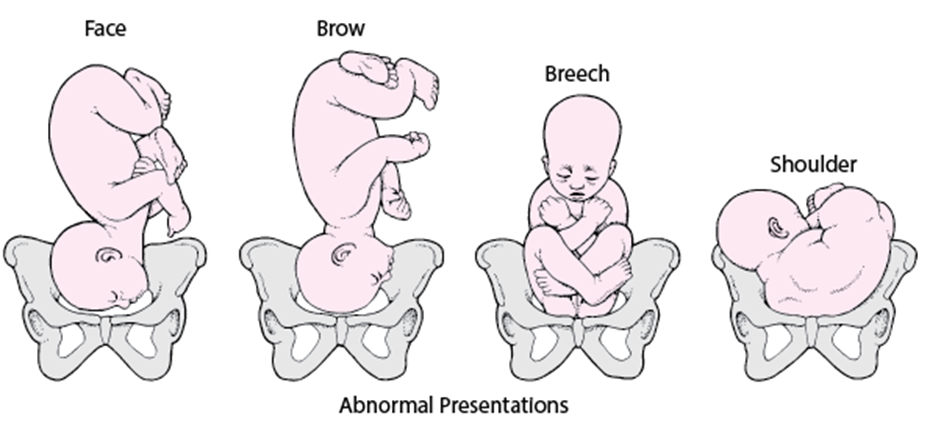A nurse is teaching a client who is in preterm labor about terbutaline. Which of the following statements by the client indicates an understanding of the teaching?
"I will get injections of the medication once daily until my labor stops."
"My blood sugar may be low while I'm on this medication."
"I will have blood tests because my potassium might decrease."
"My blood pressure may increase while I'm on this medication."
The Correct Answer is C
Choice A Reason:
"I will get injections of the medication once daily until my labor stops." Terbutaline is typically administered as a subcutaneous injection or orally, but the frequency can vary. It is often given as needed or on a scheduled basis, depending on the healthcare provider's instructions. However, "once daily until labor stops" is not a typical approach.
Choice B Reason:
"My blood sugar may be low while I'm on this medication." While terbutaline can affect glucose metabolism, it is more commonly associated with hyperglycemia (high blood sugar) rather than hypoglycemia (low blood sugar).
Choice C Reason:
"I will have blood tests because my potassium might decrease." Terbutaline, a beta-2 adrenergic agonist, can potentially lead to hypokalemia (a decrease in potassium levels). Monitoring potassium levels through blood tests is important during terbutaline therapy.
Choice D Reason:
"My blood pressure may increase while I'm on this medication." Terbutaline is known to cause cardiovascular side effects, but an increase in blood pressure is not a common effect. It is more associated with tachycardia (increased heart rate) and potential hypotension. Monitoring blood pressure is still important, but an increase is less likely compared to other cardiovascular effects.
Nursing Test Bank
Naxlex Comprehensive Predictor Exams
Related Questions
Correct Answer is {"A":{"answers":"A"},"B":{"answers":"A"},"C":{"answers":"A"},"D":{"answers":"A"},"E":{"answers":"B"},"F":{"answers":"B"}}
Explanation
Increase the oxytocin infusion to 13 mu/min:
Anticipated: This action is anticipated. The nurse may consider adjusting the oxytocin infusion rate based on the progress of labor and the response to the current infusion rate.
Place client in a side-lying position:
Anticipated: Placing the client in a side-lying position is an anticipated action. This position can enhance fetal oxygenation and blood flow, especially if there are concerns about fetal well-being.
Initiate bolus of primary IV fluids:
Anticipated: Initiating a bolus of primary IV fluids is an anticipated action. Adequate hydration is important during labor, and a bolus may be initiated if there are signs of dehydration or as part of the overall management plan.
Apply oxygen at 10 L/min via a venturi mask:
Anticipated: Applying oxygen at 10 L/min via a venturi mask is an anticipated action. Oxygen may be administered to the mother to improve oxygenation and, consequently, fetal oxygenation.
Perform sterile vaginal examination (SVE):
Nonessential: Based on the information provided, there is no indication for a sterile vaginal examination at this time. The cervical assessment was performed earlier at 0600, and frequent unnecessary SVEs can increase the risk of infection.
Assign a Bishop score:
Nonessential: Assigning a Bishop score is not essential at this point. The client's cervical status was assessed earlier at 0600, and the current focus is on monitoring the progress of labor with oxytocin.
Correct Answer is D
Explanation
The correct answer is D. Prolonged labor
A. Umbilical cord prolapse is more commonly associated with breech presentations or other abnormal fetal positions. It is not a typical complication of occipital brow presentation.
B. Precipitous labor refers to an unusually rapid labor, and it is not a typical complication associated with occipital brow presentation. Prolonged labor is more likely.
C. Hypertonic uterine dysfunction involves excessive uterine contractions, and it is not specifically associated with occipital brow presentation. It is more commonly associated with other factors, such as maternal anxiety or use of oxytocin.
D. Prolonged labor is a complication that can be associated with occipital brow presentation.
Occipital brow presentation involves the fetal head being partially extended, and it can lead to difficulties in descending through the birth canal. This may result in a prolonged labor process.

Whether you are a student looking to ace your exams or a practicing nurse seeking to enhance your expertise , our nursing education contents will empower you with the confidence and competence to make a difference in the lives of patients and become a respected leader in the healthcare field.
Visit Naxlex, invest in your future and unlock endless possibilities with our unparalleled nursing education contents today
Report Wrong Answer on the Current Question
Do you disagree with the answer? If yes, what is your expected answer? Explain.
Kindly be descriptive with the issue you are facing.
